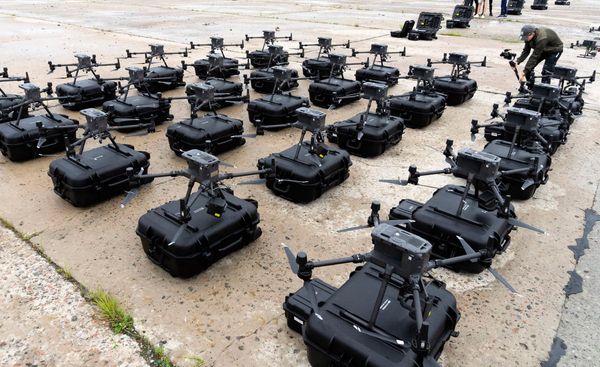
By Do Thanh Hai, Diplomatic Academy of Vietnam
Over the last four months, Vietnam has faced a serious challenge to its sovereignty in the South China Sea. Strategic circles in Hanoi are stirred by China’s repeated intrusions into Vietnam’s Exclusive Economic Zone (EEZ) off its central and southern coastlines.
Between July 4 and October 24, 2019, China sent survey ship Haiyang Dizhi 8 (HD8) to conduct four seismic surveys in the waters within 200 nautical miles of Vietnam. Data collected by the South China Sea Chronicle Initiative shows that the HD8 came as close as 65.2 nautical miles from the coast of Phu Yen Province and covered an area of roughly 110,000 square kilometers. At the same time, Chinese Coast Guard (CCG) vessel Haijing 35111 harassed the Japanese rig Hakuryu-5 chartered by a Vietnamese joint venture with Russia’s Rosneft in Block 06.01 in waters about 190 miles southeast of Vietnam.
This was not a standalone act. In May 2019, Haijing 35111 obstructed the activities of Malaysia’s drilling rig in the area near Luconia Shoal, 1,000 miles from the Chinese mainland but 90 miles from East Malaysia. Earlier, the Chinese maritime militia blocked the Philippines from approaching Thitu Island. The Washington-based Asia Maritime Transparency Initiative (AMTI) revealed that China maintains a permanent presence in all critical areas of this stretch of ocean, including Luconia Shoal, Second Thomas Shoal and Scarborough Shoal.
China is far more powerful than other claimants. In terms of naval power, China is roughly 10 times bigger than Vietnam and outnumbers all Southeast Asian navies combined. Its coastguard is also the strongest. As a show of force, China sent its 12,000-tonne CCG vessel Haijing 3901 — dubbed ‘the monster’ — and a fleet of 40 ships to escort HD8. These ships can operate for long periods of time far from the mainland thanks to refuelling and replenishment from China-built artificial islands in the Spratlys.
The underlying problem is a dispute over the legality of conflicting claims where China has consistently refused third party adjudication. China justified the HD8 undertaking as a reaction to Vietnam’s new drilling in Block 06.01, which lies within its infamous nine-dash line. On the other side, the Vietnamese viewed both the survey and China’s interference as unlawful under UNCLOS. From Vietnam’s perspective, China is deliberately attempting to turn “undisputed waters” into “disputed spaces” as a pretext to prevent coastal states from working with international oil firms in these areas, a term China is pressing in the Code of Conduct negotiations.
Vietnam’s key conundrum is whether it should risk open conflict with China to defend its maritime sovereignty. Strategically, the situation is not too dismal for Hanoi. Its elongated mainland and improved defense capabilities, alongside its experience, makes Vietnam both capable and indomitable within ASEAN. Its multi-layered defense system can inflict substantial costs upon any unlawful operation near its coast. But any conflict would cause major disruptions to Vietnam’s development priorities and must remain a last resort.
It could be more tempting for Hanoi to accept a Beijing-pressed joint exploitation proposal and sideline UNCLOS. It may not be worth fighting an uphill battle alone against China to defend such a frail covenant. And Vietnam is standing alone — Malaysia and the Philippines seem to care less about maritime rights and more about their economic relationships with China.
Though expressing support for UNCLOS and a rules-based order in principle, other powers — with the exception of the United States — are reluctant to openly criticize China’s intrusion into Vietnam’s EEZ. But giving in to Beijing could be more precarious as it may lead to further expansionism.
Against all odds, Hanoi has stubbornly defended UNCLOS. Vietnam’s leaders, President Nguyen Phu Trong and Prime Minister Nguyen Xuan Phuc, articulated a clear and consistent message that Hanoi will not concede on issues of independence and territorial integrity. This message was backed up by the deployment of 50 ships to affirm Vietnam’s interests, though with considerable restraint.
Hanoi has never ruled out the military defense option but resorting to force clearly represents a diplomatic failure. Though its defense force is combat-ready, Hanoi’s policy is to first exhaust all peaceful measures. Vietnamese officials have reportedly communicated dozens of protests to their Chinese counterparts. While its ASEAN partners pursued quiet diplomacy, Vietnam’s foreign ministry issued four public statements condemning China’s breach of UNCLOS.
Vietnam will likely scale up its response if the stand-off drags on. Other options have been discussed, such as bringing the case to the United Nations, international media campaigns, legal action, national rallies or forceful interventions. Though playing a prudent game, political elites in Hanoi are not insensitive to rising nationalism at home. The aim is not escalation, but gradually signaling the right message of resolve to Beijing.
As Vietnam stands its ground and attests to the legitimacy of its claims in public, the ball is in Beijing’s court to decide whether China wants to be a responsible emerging power.
READ NEXT: Can Asia Stand Up to China's Bullying?
The News Lens has been authorized to republish this article from East Asia Forum. East Asia Forum is a platform for analysis and research on politics, economics, business, law, security, international relations and society relevant to public policy, centered on the Asia Pacific region.
TNL Editor: Daphne K. Lee (@thenewslensintl)
If you enjoyed this article and want to receive more story updates in your news feed, please be sure to follow our Facebook.







